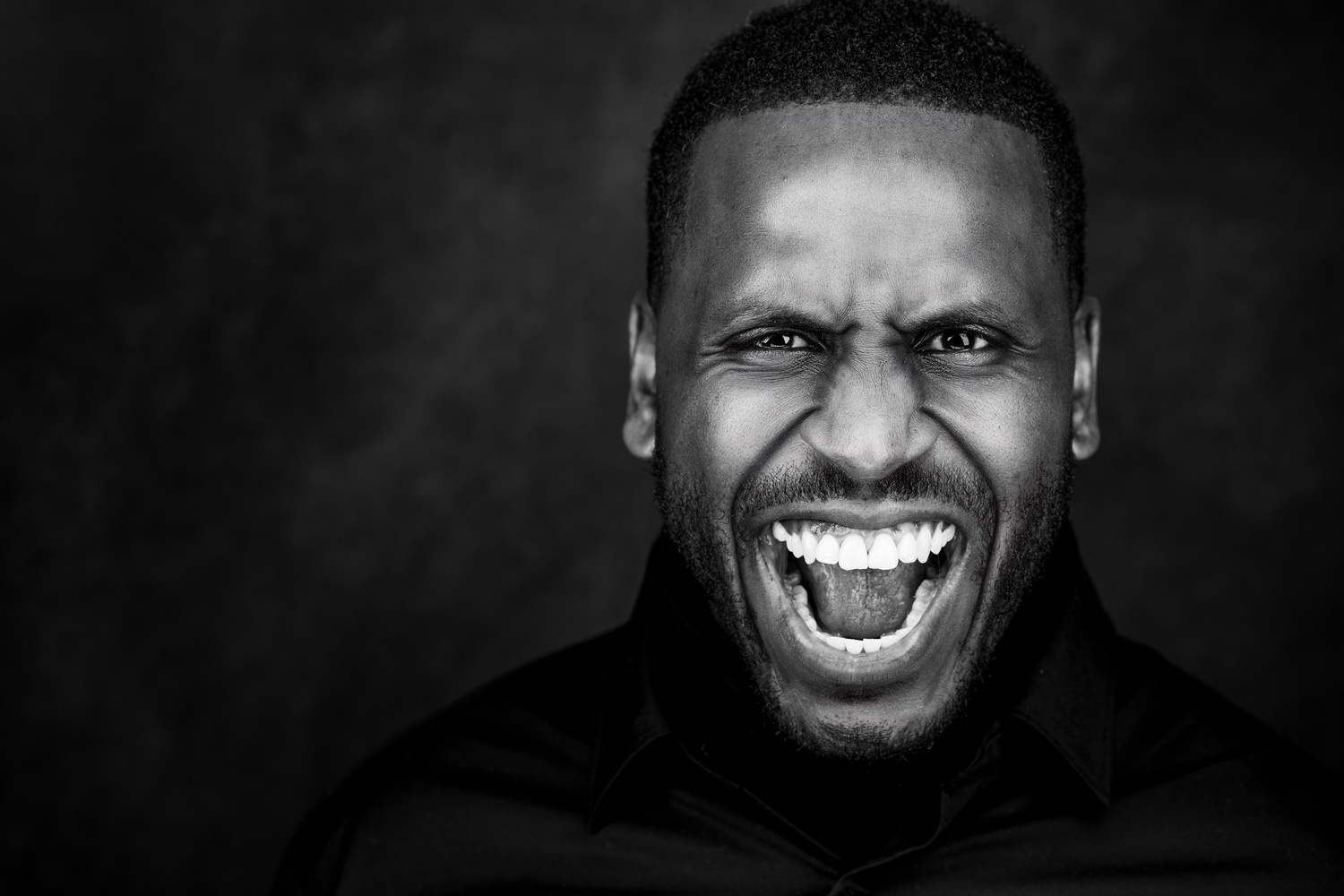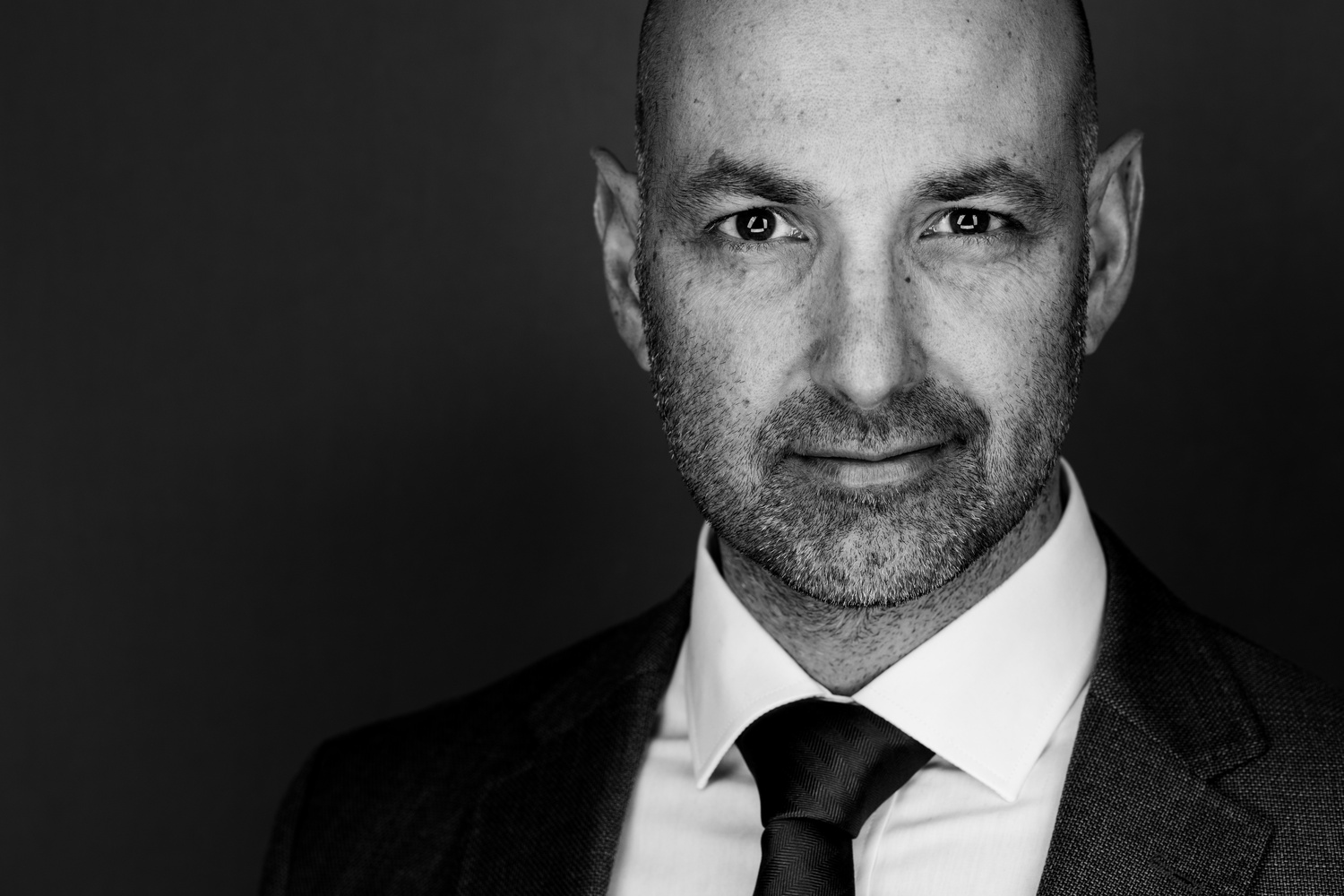If part of your business is capturing headshots, then this is for you. Even if you're thinking of adding it to your portfolio, it's worth checking these essential tips and tricks as, if you're a commercial photographer, you can up your customer's average spend by offering this essential service.
1. Have a great booking system that sends out information on what your clients need to do to prepare for their upcoming shoot. I use Calendy (there's a free version and a paid version available). I send out a few paragraphs informing clients what I expect from them, what they should expect from me, my fees, payment methods and also how to prepare to get the best shots. Personal grooming and fashion tips should also be included, as you always want your customers to turn up looking their best, as this will reflect in your images. It's easier for them to read about bleaching a top lip and pulling stray nose and ear hairs than it is to be talking to them in person about this, as it may or may not even apply to them, but shows you've considered everyone.
2. Don't take photos as soon as people come into your studio or space. Talk to them, make them coffee, tea, whatever. Talk to them about where they are going to be using the images and whether they will be using them with copy text to the left or right. Look at the clothes they have brought with them and help them choose the first outfit to shoot. Reassure them if they have turned up with a zit from hell. It happens to the best of us, and rarely does anyone turn up looking immaculate. This is important, as people will feel more relaxed with people they like and trust.

3. Kit-wise, find a style and stick to it. I use three Godox AD200 with the bulb head on a Godox S2 Speedlite Bracket for Bowens. I use Godox strip boxes, as they are cheap but good quality and offer a decent amount of diffusion. I turn on the guide lights so that the eyes adjust to the light and we see more of the color in the eye. They are set up in a triangular configuration with the top two parts of the triangle at 1/16 power and the bottom horizontal strip box set at 1/32. My Canon EOS R is set up at f/4-5.6 at around ISO 200 and 1/160 a second shutter speed on a Canon 100mm f/2.8L Macro lens. I always use a tripod, and my kit of choice in the studio is a Manfrotto MK290XTA3-3WUS 290 Xtra Aluminum Tripod with the 804 3-Way Pan/Tilt Head. I shoot tethered using a Tether Tools TetherPro USB Type-C Male to USB Type-C Male Cable and edit into Adobe Lightroom Classic. You can also use Capture One, as the tethering on that is better, but I prefer using Lightroom.
4. Get good at banter. The face is an expression map of people's feelings, concerns, and worries. The best way I've found to get great, expressive photos is to make people laugh and shoot through the smile. By that, I mean, first, start by understanding the key stages of the facial expression. During the initial energy in the face from hearing something funny, they might tilt their head back and laugh, and then comes the cooldown. The energy still resides in the face for a second or two, and this is what you are aiming to capture, as this is the most impressive part. The final stage is where the face returns to the expression prior to what made them laugh or smile. Getting good at making people laugh puts them at ease and brings out their personality. Plus, you get some incredibly expressive and amazing photos that are going to blow people away. Remember, most people will have never seen themselves like this.

5. Use an app or a notepad if you're not good at coming up with things to say to people. I recommend Peter Hurley's Hurleyisms. It's a good way to have instant access to a few funny things to say if you freeze up, and it'll get you into the habit of coming up with things that will eventually lead you to develop your own banter and style.
6. Get some good training. I recommend The Headshot: The Secrets to Creating Amazing Headshot Portraits. It's what led me to train with Peter Hurley in London when I took the Headshot Intensive training a few years ago. It really took me down another path, generating an additional income stream that makes me a decent amount every year.

7. Advertise on LinkedIn. Most of the clients that are going to need a great headshot will be found there. Use headshots you've taken in the past to advertise for new clients. Write a blog on how a killer headshot is going to raise people's profiles that they can use on their website and social media.
8. Pricing-wise, big companies will tend to want all of their employees photographed at the same time for maybe a website refresh or even employee badges, so remember to give them the price of a day rate as well as the option of a session rate and price for editing chosen images. The session cost is usually what I charge for a single two-hour session, and then, I charge per image edited. For multiple-client business sessions, you can still have a ful- or half-day rate, but you should spend at least 30 minutes with each member of staff to get the best shots out of them. Don't try to rush everyone through, or you'll end up with unhappy clients and will be unlikely to get a repeat booking or even have them choose more than one shot.

9. Once your session is over, sit the client down, make them a cup of coffee, and allow them to choose their images. If I've shot around 200-250 images in a two-hour session, then most people choose around 20-25 images to purchase. These are edited and uploaded to my finished client platform. I also upload all the unedited images to another gallery and inform every client that for every recommendation I get because of them, as soon as the new client books in, I allow them to choose an image from the unedited gallery to be edited and keep free of charge. This is a good referral system, as it's using people that are already happy with their images I wouldn't otherwise sell, and it's good to be able to reward people for recommending you.

10. Partner with a local makeup and hair stylist. Lots of clients will do their own hair and makeup, but offering the service at an additional upfront cost makes this more of an experience for people and makes the session a little more special. You can work on a referral fee from your hair and makeup artist and earn extra revenue from the session.
Hopefully, this will give you a little insight into how I run my headshot business.







So in addition to using the same Hurley lighting for each subject, people also use a list of Hurley-isms?
Dang, that's interesting...
So I'm just mentioning what I use Mike Ditz. You are of course free to use it or not use it. That is your choice and these are my suggestions. As I say in the article "it'll get you into the habit of coming up with things that will eventually lead you to develop your own banter and style." If you are already an established headshot photographer then I put it to you, you wouldn't need the tips included in this article.
I just wasn't aware that a script was part of the Hurley headshot program...
A guy I knew back in Detroit would tell the subjects to say different variations of "hey".
Hey! I like that lol. It's not it's just an idea to help new photographers connect with their subjects
Good and useful article!
Thank you Manny.
Very nice set of tips!
I find the eye catchlights distracting a bit. You arranged three thin softboxes in a triangle. Was there some reason you did it that way? Have you considered shooting through the centre of a ring diffuser? That makes a nice, round, pleasant catchlight.
Probably wouldn't be noticed by anyone who wasn't a lighting nerd, though! :-)
Thank you for your nice comments Jan Steinman. Yeah I kinda like the triangle effect catchlight for me it pulls people into the eyes and whilst they don't necessarily know why the eyes captivate, they do and I put it down to the lighting. It's not always that easy to get right as they have to be adjusted to each particular individual but when it's right it creates a lovely falloff and balanced lighting. Filling the face with light also fills any potential wrinkle lines and softens them making for a much more beautiful shot in my opinion. And it's okay us nerds have to stick together ;). Kind regards. Peter
The triangle lighting set up was made popular by Peter Hurley and his headshot system.
Yes I learned that and several other types of lighting when I trained with him several years ago in London.
Nice article Peter... But I have just one important question.
Is that the Go Compare guy?
Ha ha Yes it is! Wynne Evans. He's a great guy, an awesome singer and we did his headshots for his new BBC programme.